Raman Spectral Characteristics of Oil-Paper Insulation and Its Application to Ageing Stage Assessment of Oil-Immersed Transformers
Abstract
:1. Introduction
2. Materials and Methods
2.1 Raman Instrumentation
2.2 Thermal Accelerated Aging Experiment
2.3 Data Pre-Processing
2.4 Empirical Approach
2.5 Multivariate Analysis
3. Results
3.1 Classification of the Training Samples
3.2 Results of the Multi-Classification SVM
3.3 Testing for the Established Diagnostic Method
4. Discussion
5. Conclusions
Acknowledgments
Author Contributions
Conflicts of Interest
References
- Aging of Cellulose in Mineral-Oil Insulated Transformers; Conseil International des Grands Réseaux Électriques (CIGRÉ): Paris, France, 2007.
- IEEE Guide for Loading Mineral Oil Immersed Transformers; IEEE: New York, NY, USA, 1995.
- Emsley, A.M. The kinetics and mechanisms of degradation of cellulosic insulation in power transformers. Polym. Degrad. Stab. 1994, 44, 343–349. [Google Scholar] [CrossRef]
- Emsley, A.M.; Xiao, X.; Heywood, R.J.; Ali, M. Degradation of cellulosic insulation in power transformers. Part 2: Formation of furan products in insulating oil. IEE Proc. Sci. Meas. Technol. 2000, 147, 110–114. [Google Scholar] [CrossRef]
- Emsley, A.M.; Xiao, X.; Heywood, R.J.; Ali, M. Degradation of cellulosic insulation in power transformers. Part 3: Effects of oxygen and water on aging in oil. IEE Proc. Sci. Meas. Technol. 2000, 147, 115–119. [Google Scholar] [CrossRef]
- N’cho, J.S.; Fofana, I.; Hadjadj, Y.; Beroual, A. Review of physicochemical-based diagnostic techniques for assessing insulation condition in aged transformers. Energies 2016, 9, 367. [Google Scholar] [CrossRef]
- Shroff, D.H.; Stannett, A.W. A review of paper aging in power transformers. IEE Proc. C Gener. Transm. Distrib. 1985, 132, 312–319. [Google Scholar] [CrossRef]
- Scheirs, J.; Camino, G.; Avidano, M.; Tumiatti, W. Origin of furanic compounds in thermal degradation of cellulosic insulating paper. J. Appl. Polym. Sci. 1998, 69, 2541–2547. [Google Scholar]
- Morais, R.M.; Mannheimer, W.A.; Carballeira, M.; Noualhaguet, J.C. Furfural analysis for assessing degradation of thermally upgraded papers in transformer insulation. IEEE Trans. Dielectr. Electr. Insul. 1999, 6, 159–163. [Google Scholar] [CrossRef]
- Höhlein, I.; Kachler, A.J. Aging of cellulose at transformer service temperatures. Part 2. Influence of moisture and temperature on degree of polymerization and formation of furanic compounds in free-breathing systems. IEEE Electr. Insul. Mag. 2005, 21, 20–24. [Google Scholar] [CrossRef]
- Okabe, S.; Ueta, G.; Tsuboi, T. Investigation of aging degradation status of insulating elements in oil-immersed transformer and its diagnostic method based on field measurement data. IEEE Trans. Dielectr. Electr. Insul. 2013, 20, 346–355. [Google Scholar] [CrossRef]
- Bruzzoniti, M.C.; Maina, R.; De Carlo, R.M.; Sarzanini, C.; Tumiatti, V. GC methods for the determination of methanol and ethanol in insulating mineral oils as markers of cellulose degradation in power transformers. Chromatographia 2014, 77, 1081–1089. [Google Scholar] [CrossRef]
- Ren, M.; Dong, M.; Liu, J. Statistical analysis of partial discharges in SF6 gas via optical detection in various spectral ranges. Energies 2016, 9, 152. [Google Scholar] [CrossRef]
- DuBois, M.; Gilles, K.A.; Hamilton, J.K.; Rebers, P.A.; Smith, F. Colorimetric method for determination of sugars and related substances. Anal. Chem. 1956, 28, 350–356. [Google Scholar] [CrossRef]
- Zheng, Y.; Sun, C.; Li, J.; Yang, Q.; Chen, W. Entropy-based bagging for fault prediction of transformers using oil-dissolved gas data. Energies 2011, 4, 1138–1147. [Google Scholar] [CrossRef]
- Xiang, C.; Zhou, Q.; Li, J.; Huang, Q.; Song, H.; Zhang, Z. Comparison of dissolved gases in mineral and vegetable insulating oils under typical electrical and thermal faults. Energies 2016, 9, 312. [Google Scholar] [CrossRef]
- Guide to the Interpretation of Dissolved and Free Gases Analysis; IEC Publication: Geneva, Switzerland, 2007.
- Shintemirov, A.; Tang, W.; Wu, Q.H. Power transformer fault classification based on dissolved gas analysis by implementing bootstrap and genetic programming. IEEE Trans. Syst. Man Cybern. Part C 2009, 39, 69–79. [Google Scholar] [CrossRef]
- Su, Q.; Mi, C.; Lai, L.L.; Austin, P. A fuzzy dissolved gas analysis method for the diagnosis of multiple incipient faults in a transformer. IEEE Trans. Power Syst. 2000, 15, 593–598. [Google Scholar] [CrossRef]
- Kelly, J.J. Transformer fault diagnosis by dissolved-gas analysis. IEEE Trans. Ind. Appl. 1980, IA-16, 777–782. [Google Scholar] [CrossRef]
- Arakelian, V.G. The long way to the automatic chromatographic analysis of gases dissolved in insulating oil. IEEE Electr. Insul. Mag. 2004, 20, 8–25. [Google Scholar] [CrossRef]
- Terry, S.C.; Jerman, J.H.; Angell, J.B. A gas chromatographic air analyzer fabricated on a silicon wafer. IEEE Trans. Electron Devices 1979, 26, 1880–1886. [Google Scholar] [CrossRef]
- Bateni, A.; Erdem, E.; Repp, S.; Weber, S.; Somer, M. Al-doped MgB2 materials studied using electron paramagnetic resonance and Raman spectroscopy. Appl. Phys. Lett. 2016, 108, 202601. [Google Scholar] [CrossRef]
- Schicks, J.M.; Spangenberg, E.; Giese, R.; Steinhauer, B.; Klump, J.; Luzi, M. New approaches for the production of hydrocarbons from hydrate bearing sediments. Energies 2011, 4, 151–172. [Google Scholar] [CrossRef]
- Kiefer, J. Recent advances in the characterization of gaseous and liquid fuels by vibrational spectroscopy. Energies 2015, 8, 3165–3197. [Google Scholar] [CrossRef]
- Kong, W.D.; Wu, S.F.; Richard, P.; Lian, C.S.; Wang, J.T.; Yang, C.L.; Shi, Y.G.; Ding, H. Raman scattering investigation of large positive magnetoresistance material WTe2. Appl. Phys. Lett. 2015, 106, 081906. [Google Scholar] [CrossRef]
- Teh, S.K.; Zheng, W.; Ho, K.Y.; Teh, M.; Yeoh, K.G.; Huang, Z. Diagnostic potential of near-infrared Raman spectroscopy in the stomach: Differentiating dysplasia from normal tissue. Br. J. Cancer 2008, 98, 457–465. [Google Scholar] [CrossRef] [PubMed]
- Somekawa, T.; Fujita, M.; Izawa, Y.; Kasaoka, M.; Nagano, Y. Furfural analysis in transformer oils using laser raman spectroscopy. IEEE Trans. Dielectr. Electr. Insul. 2015, 22, 229–231. [Google Scholar] [CrossRef]
- Li, X.Y.; Xia, Y.X.; Huang, J.M.; Zhan, L. A Raman system for multi-gas-species analysis in power transformer. Appl. Phys. B 2008, 93, 665–669. [Google Scholar] [CrossRef]
- Reinsch, C.H. Smoothing by spline functions. Numer. Math. 1967, 10, 177–183. [Google Scholar] [CrossRef]
- Smith, R., Jr.; Price, J.; Howser, L. A Smoothing Algorithm Using Cubic Spline Functions; NASA-TN-D-7397; NASA: Washington, WA, USA, 1974.
- Zhang, Z.-M.; Chen, S.; Liang, Y.-Z. Baseline correction using adaptive iteratively reweighted penalized least squares. Analyst 2010, 135, 1138–1146. [Google Scholar] [CrossRef] [PubMed]
- Jiang, X.; Xia, Y.; Hu, J.; Zhang, Z.; Shu, L.; Sun, C. An S-transform and support vector machine (SVM)-based online method for diagnosing broken strands in transmission lines. Energies 2011, 4, 1278–1300. [Google Scholar] [CrossRef]
- Lachenbruch, P.A.; Mickey, M.R. Estimation of error rates in discriminant analysis. Technometrics 1968, 10, 1–11. [Google Scholar] [CrossRef]
- Devore, J.L. Probability and Statistics for Engineering and the Sciences; Cengage Learning: Boston, MA, USA, 2015. [Google Scholar]
- Hsu, C.; Lin, C. A comparison of methods for multiclass support vector machines. IEEE Trans. Neural Netw. 2002, 13, 415–425. [Google Scholar] [PubMed]
- Chen, W.; Gu, Z.; Zou, J.; Wan, F.; Xiang, Y. Analysis of furfural dissolved in transformer oil based on confocal laser Raman spectroscopy. IEEE Trans. Dielect. Electr. Insul. 2016, 23, 915–921. [Google Scholar] [CrossRef]
- De Maesschalck, R.; Jouan-Rimbaud, D.; Massart, D.L.L. The Mahalanobis distance. Chemom. Intell. Lab. Syst. 2000, 50, 1–18. [Google Scholar] [CrossRef]
- Saha, T.K. Review of modern diagnostic techniques for assessing insulation condition in aged transformers. IEEE Trans. Dielect. Electr. Insul. 2003, 10, 903–917. [Google Scholar] [CrossRef] [Green Version]
- Van Bolhuis, J.P.; Gulski, E.; Smit, J.J. Monitoring and diagnostic of transformer solid insulation. IEEE Trans. Power Deliv. 2002, 17, 528–536. [Google Scholar] [CrossRef]
- Huang, C.; Wang, C. A GA-based feature selection and parameters optimization for support vector machines. Expert Syst. Appl. 2006, 31, 231–240. [Google Scholar] [CrossRef]
- Kohavi, R. A study of cross-validation and bootstrap for accuracy estimation and model selection. In Proceedings of the 14th International Joint Conference on Artificial intelligence, San Francisco, CA, USA, 20–25 August 1995; Volume 2, pp. 1137–1143.
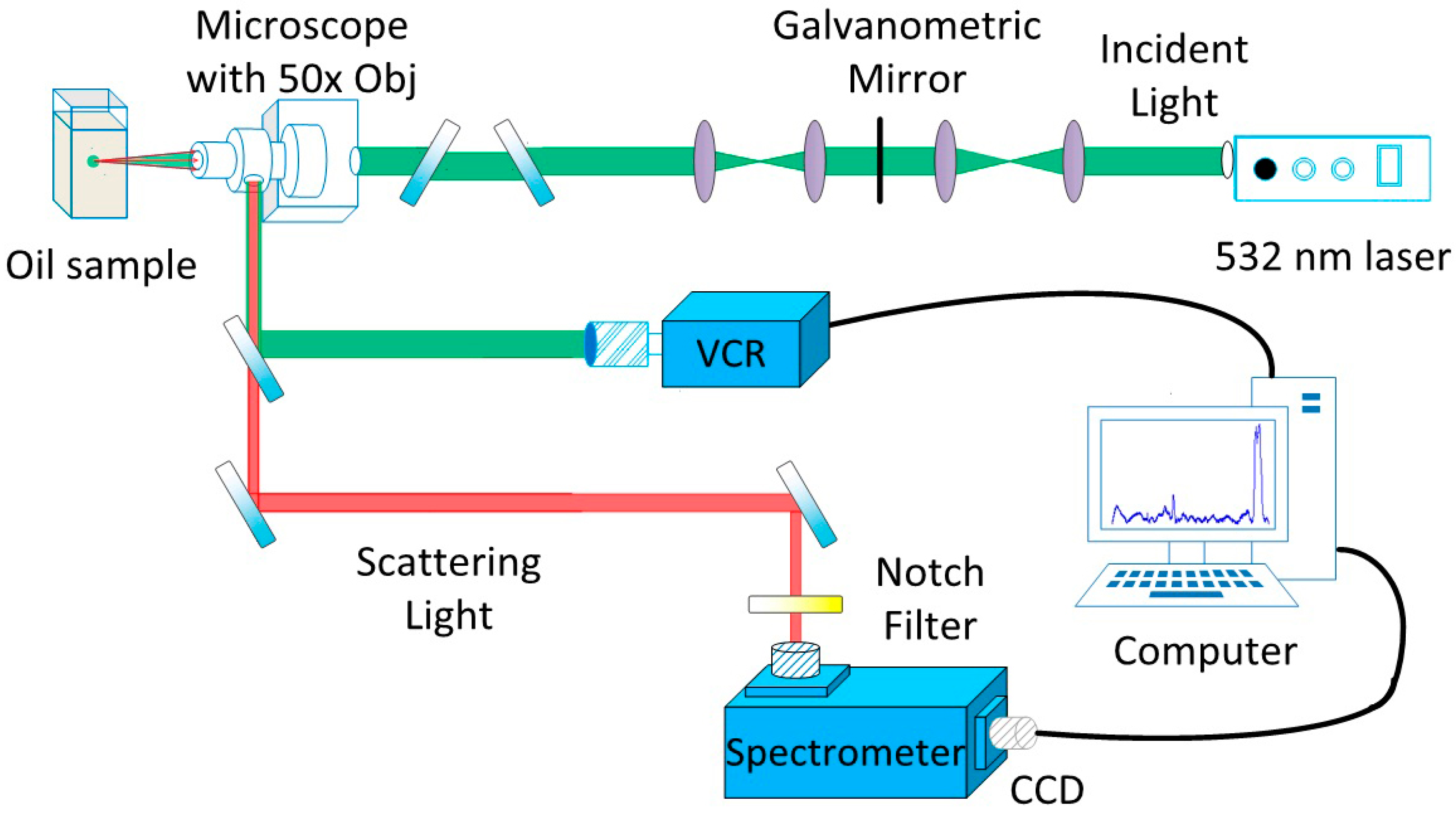


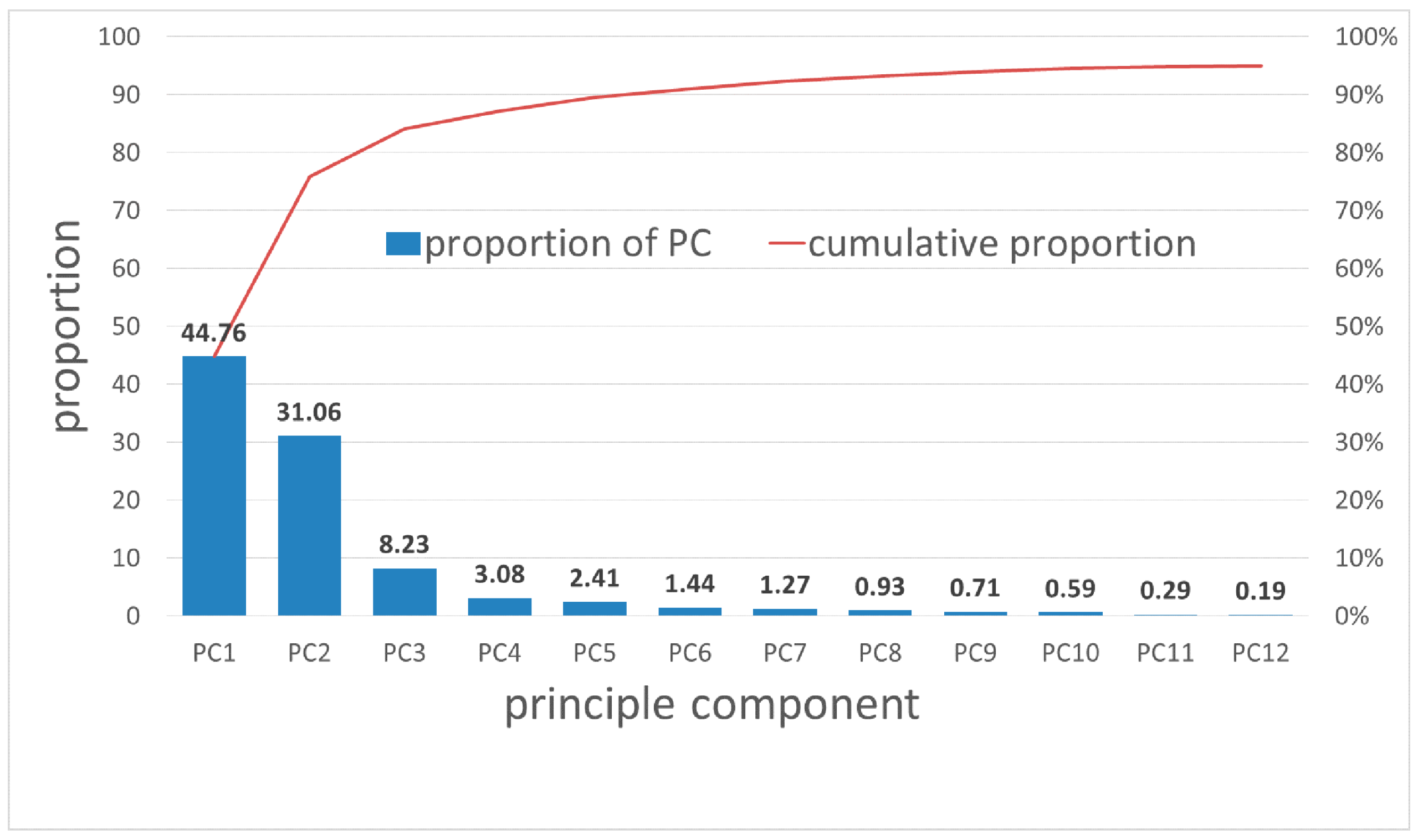

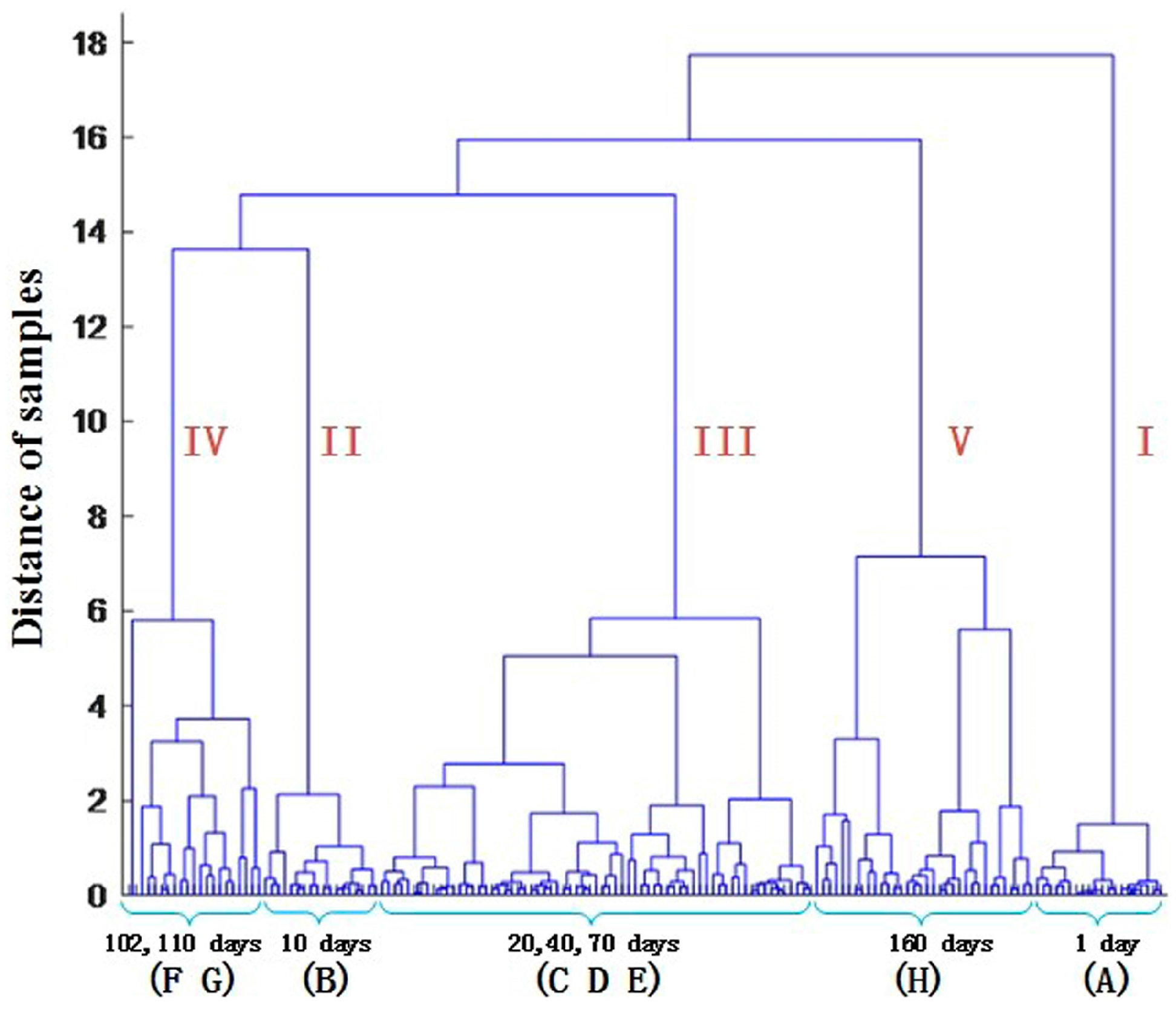

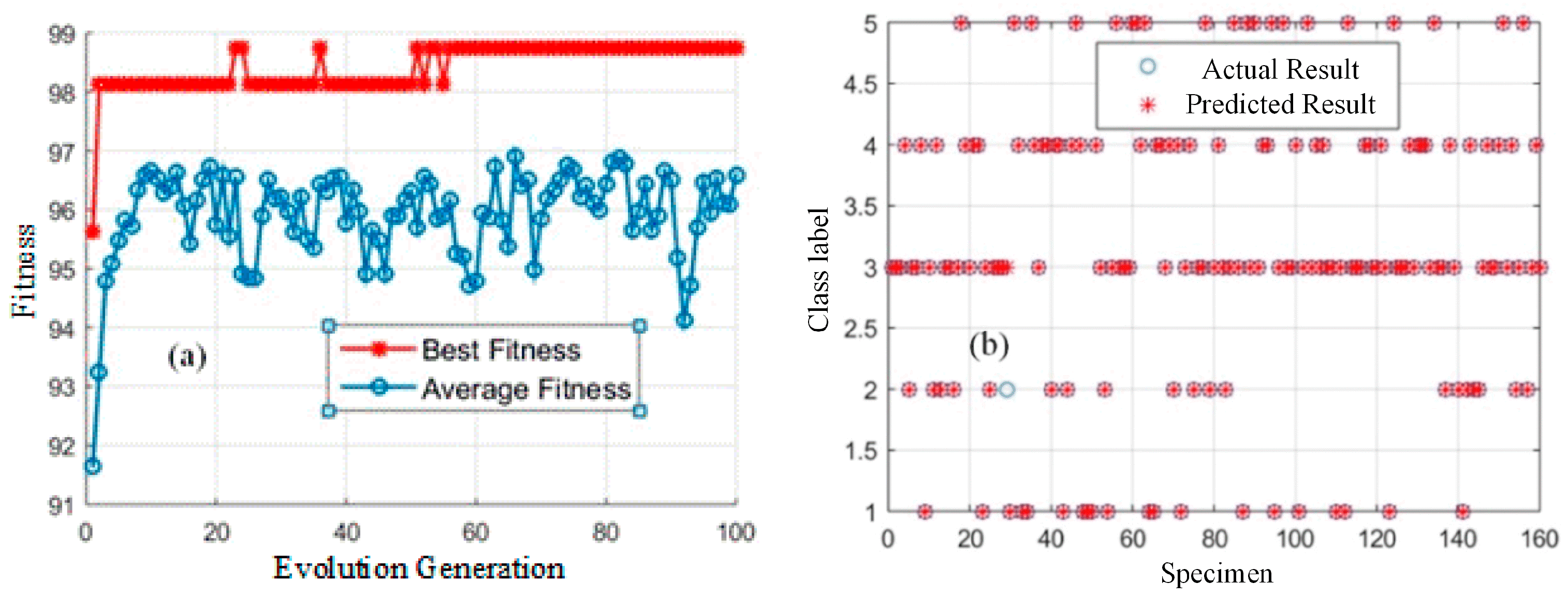
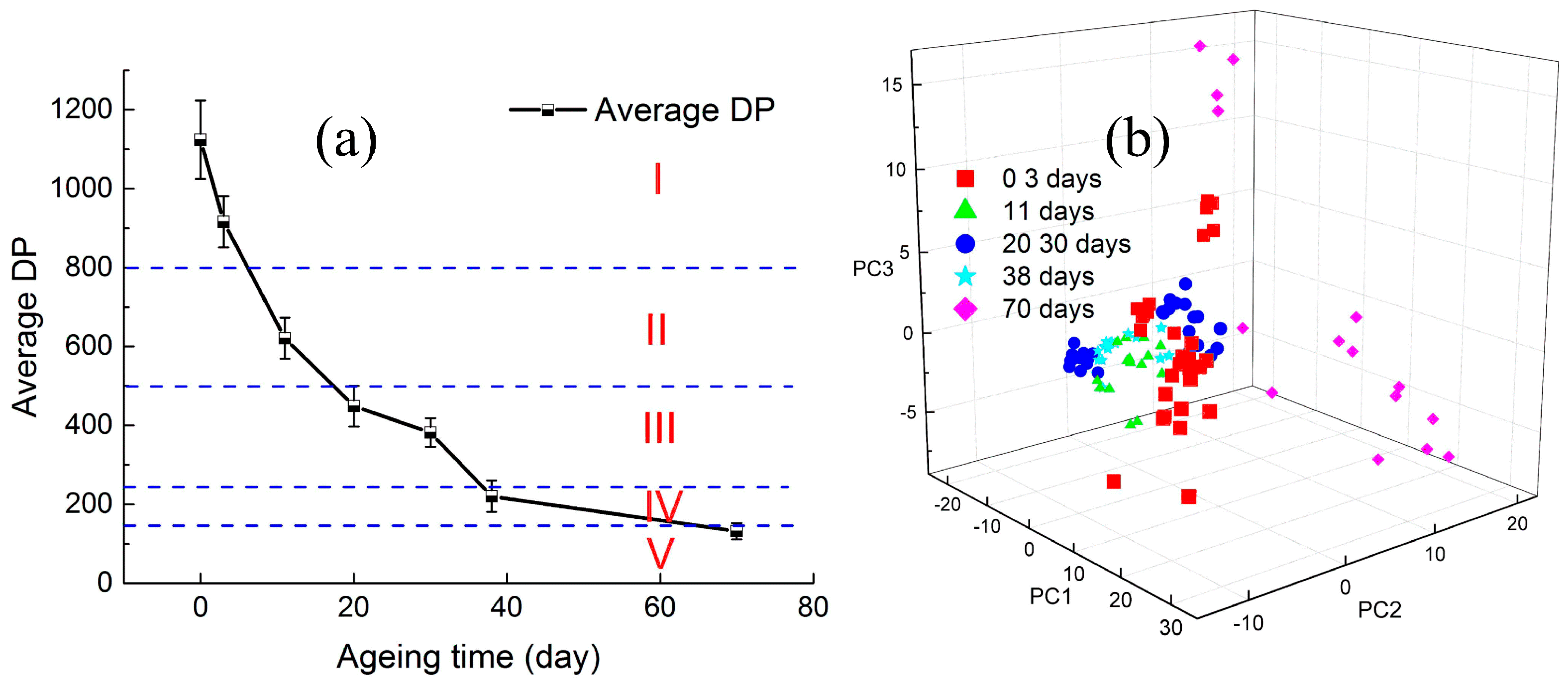
| True Class | Predicted Class | True Positive Rates | Positive Predictive Values | ||||
|---|---|---|---|---|---|---|---|
| I | II | III | IV | V | |||
| I | 19 | 0 | 1 | 0 | 0 | 95.0% | 100% |
| II | 0 | 17 | 3 | 0 | 0 | 85.0% | 94.4% |
| III | 0 | 1 | 59 | 0 | 0 | 98.3% | 84.3% |
| IV | 0 | 0 | 6 | 34 | 0 | 85.0% | 100% |
| V | 0 | 0 | 1 | 0 | 19 | 95.0% | 100% |
| Aging Time (Day) | Average DP | True Class | Predicted Class | Accuracy | ||||
|---|---|---|---|---|---|---|---|---|
| I | II | III | IV | V | ||||
| 0 | 1124 | I | 14 | 0 | 1 | 0 | 0 | 93.3% |
| 3 | 916 | I | 12 | 1 | 1 | 1 | 0 | 80.0% |
| 11 | 621 | II | 2 | 9 | 2 | 1 | 1 | 60.0% |
| 20 | 449 | III | 1 | 3 | 10 | 1 | 0 | 66.7% |
| 30 | 382 | III | 0 | 1 | 12 | 0 | 2 | 80.0% |
| 38 | 221 | IV | 1 | 1 | 3 | 8 | 2 | 53.3% |
| 70 | 132 | V | 0 | 0 | 1 | 2 | 12 | 80.0% |
© 2016 by the authors; licensee MDPI, Basel, Switzerland. This article is an open access article distributed under the terms and conditions of the Creative Commons Attribution (CC-BY) license (http://creativecommons.org/licenses/by/4.0/).
Share and Cite
Zou, J.; Chen, W.; Wan, F.; Fan, Z.; Du, L. Raman Spectral Characteristics of Oil-Paper Insulation and Its Application to Ageing Stage Assessment of Oil-Immersed Transformers. Energies 2016, 9, 946. https://doi.org/10.3390/en9110946
Zou J, Chen W, Wan F, Fan Z, Du L. Raman Spectral Characteristics of Oil-Paper Insulation and Its Application to Ageing Stage Assessment of Oil-Immersed Transformers. Energies. 2016; 9(11):946. https://doi.org/10.3390/en9110946
Chicago/Turabian StyleZou, Jingxin, Weigen Chen, Fu Wan, Zhou Fan, and Lingling Du. 2016. "Raman Spectral Characteristics of Oil-Paper Insulation and Its Application to Ageing Stage Assessment of Oil-Immersed Transformers" Energies 9, no. 11: 946. https://doi.org/10.3390/en9110946





